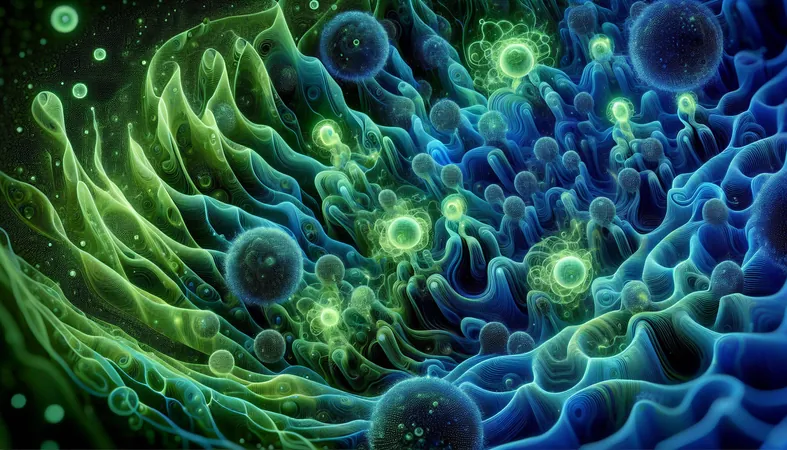
The Bizarre Science of Mirror Bacteria: A Chiral Dilemma
2025-05-23
Author: Daniel
Unlocking the Mystery of Chirality
Have you ever tried to stack your palms and noticed they just won’t align perfectly? You’ve just encountered chirality—a fascinating property of objects that cannot be superimposed on their mirror images. While you may think of chirality in terms of human anatomy, it also governs the molecular building blocks of life, like DNA, proteins, and sugars. This unique feature plays a vital role in how cells interact with their environment, much like how a key fits into a lock.
Why Does Chirality Matter?
According to Dr. Kate Adamala from the University of Minnesota, chirality is essential for biological functions. It structures how molecules bind and interact, making it integral to biological evolution. Most molecules exist in a singular chiral form; however, scientists are now able to create mirror versions of these molecules. Remarkably, these mirror molecules could offer a solution to degradation issues faced by naturally chiral molecules, potentially paving the way for long-lasting therapeutic applications.
The Wild Concept of Mirror Bacteria
Imagine a world inhabited by mirror bacteria made entirely from molecules of the opposite chirality to those we know. While this notion may sound like something out of a sci-fi novel, researchers argue that pursuing mirror bacteria could yield insights into the fundamental question: What exactly is life?
Vaughn Cooper, an expert in microbiology, suggests that exploring the possibility of life with opposite chirality can help us understand whether our current life forms represent an evolutionary advantage or simply a random occurrence.
The Invisible Microbes: A Double-Edged Sword
One of the surprising benefits of mirror bacteria is their stealth. They would be undetectable to existing life forms, making them immune to predators like phages or nematodes. This quality could transform industrial processes like fermentation—where contamination is a costly nuisance—by allowing mirror cells to thrive unnoticed.
Tread Carefully: Risks of Creating Mirror Life
However, the remarkable benefits of mirror bacteria also come with significant risks. John Glass from the J. Craig Venter Institute warns that a self-replicating organism made from mirror components could escape natural biological checks and balances, potentially leading to disastrous consequences. If immune systems, which recognize only naturally occurring configurations, fail to detect mirror bacteria, it could lead to widespread infections.
Moreover, current antibiotics are unlikely to combat these rogue organisms, necessitating the development of entirely new drugs—an uncertain and daunting task.
A Path Towards Awareness and Regulation
The fact that we can't create mirror life just yet gives us the chance to proactively address potential dangers. Experts, including Dr. Jonathan Jones, emphasize that while the risks are not immediate, it’s vital to begin discussions on the regulations surrounding this groundbreaking research.
Conferences and funding initiatives, like the Mirror Biology Dialogues Fund, aim to unite scientists across disciplines to explore the implications of mirror life creation. These gatherings stress that now is the time for dialogue to prevent potential risks from materializing.
Conclusion: Collaboration is Key
Dr. Adamala stresses the importance of interdisciplinary communication in navigating this complex issue. Previously focused on creating mirror cells, her team pivoted after realizing their potential dangers through discussions with ecologists and immunologists. This collaborative spirit underscores the necessity of collective reflections in diverse fields of research.
In the words of Dr. Cooper, this serves as a remarkable example of what can be achieved when scientists unite to work through complex challenges.


 Brasil (PT)
Brasil (PT)
 Canada (EN)
Canada (EN)
 Chile (ES)
Chile (ES)
 Česko (CS)
Česko (CS)
 대한민국 (KO)
대한민국 (KO)
 España (ES)
España (ES)
 France (FR)
France (FR)
 Hong Kong (EN)
Hong Kong (EN)
 Italia (IT)
Italia (IT)
 日本 (JA)
日本 (JA)
 Magyarország (HU)
Magyarország (HU)
 Norge (NO)
Norge (NO)
 Polska (PL)
Polska (PL)
 Schweiz (DE)
Schweiz (DE)
 Singapore (EN)
Singapore (EN)
 Sverige (SV)
Sverige (SV)
 Suomi (FI)
Suomi (FI)
 Türkiye (TR)
Türkiye (TR)
 الإمارات العربية المتحدة (AR)
الإمارات العربية المتحدة (AR)